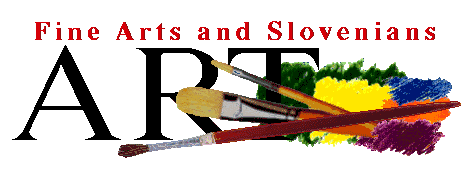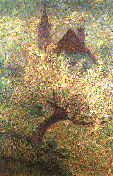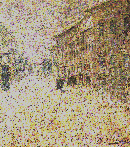


... he devoted himself to motifs fom peasant life and Slovene landscape; ... After the disintegration of the Skofja Loka group Grohar started on his own way as a painter of Slovene peasant life. His work has a special charm: his landscapes express a lyrical mood to which Ivan Cankar was very susceptible; his last works represent a great declaration which matured for a long time but was silenced before it reached its climax. Half a decade before his dead Grohar discovered his own way with the Slovene landscape experienced lyrically, owing to his spiritual affinity with Segantini and the intimate tendencies of the basic phase of Slovene Impressionism...
 Ivan Grohar:
Skofja Loka in Snow
Ivan Grohar:
Skofja Loka in Snow
After a long struggle to master impressionist technique by painting landscape he returned to man, whom he had painted in his youth in the popular genre style. But now he raised him a visionary greatness which was not revealed even to Jakopic who was undoubtedly the closest to him in spirit. "The Shepherd" , painted just before his death, is a glorification of his own youth, the glorification of the lowest on the social scale - the shepherd...
... the Grohar’s "Shepherd" speaks for himselfs as a creation of pure art needing no literary explanation, for his "image" raises us to the realm of pure poetry expressed by colour, if not indeed to a mystical vision of the Good Shephard.
From "Slovene Impressionism" by France Stelè
(Translation: Elsa Jereb and Alasdair Mackinnon)
Published by CoLibri, Ljubljana 1994